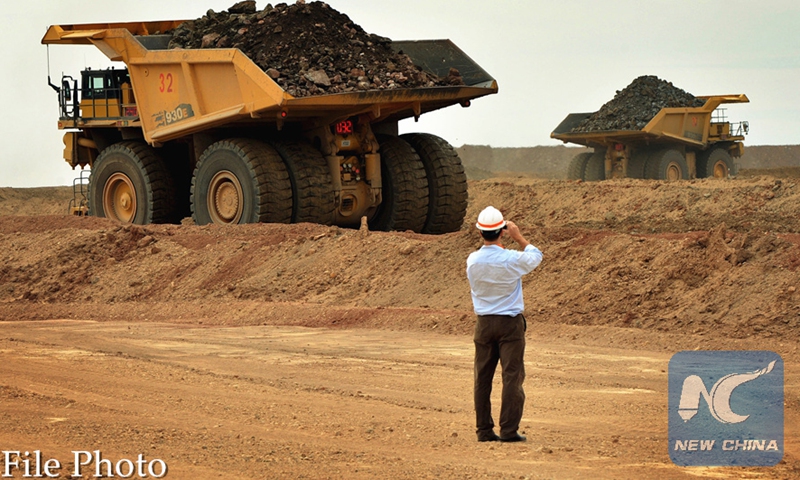The Chinese market was the main source of revenue for Anglo-Australian metals and mining giant Rio Tinto in 2021, data from the company’s latest financial report showed. The revenue from China rose by more than 40 percent in 2021, allowing the world’s second-biggest miner to achieve its best ever annual profit last year, again testifying to the power of demand in the domestic market.
The company’s sales in the Chinese market totaled $36.31 billion in 2021, and China accounted for 57.2 percent of Rio Tinto’s total sales revenue last year, while the proportion from the US market came in second at 12.6 percent, the financial data showed. The firm’s revenue in the US stood at $8.01 billion.
In total, the company’s revenues reached $63.49 billion last year, up from $44.61 billion the year before and higher than market expectations of $61.41 billion. The company’s profits surged 116 percent to $21.09 billion.
Experts said that the jump in Rio Tinto’s sales revenue in China was due to a rise in both purchasing volume and commodity prices. Prices jumped not just for iron ore which accounts for most of Rio Tinto’s profits, but also for other commodities like copper and aluminum.
“In China, the enhanced investment in infrastructure construction as well as the increasing global orders for Chinese products amid the coronavirus crisis led to a jump in iron ore imports and imports of other raw materials,” Lin Boqiang, director of the China Center for Energy Economics Research at Xiamen University, told the Global Times on Wednesday.
Rio Tinto noted that the company sold 14 million tons of iron ore to China in 2021, up 1.54 times on a yearly basis.
The flourishing orders from domestic buyers also showed the importance of the Chinese market for global commodity giants, despite geopolitical tensions and hostility to China from some governments, experts said.
“For companies like Rio Tinto, China is their core market. They can’t do without demand from the Chinese market,” Lin said.
Rio Tinto acquired North Limited, an Australian company with iron ore and uranium mines, in 2000.
Simon Farry, vice president of iron ore marketing at Rio Tinto, said recently that the company will do its best to meet China’s demand for iron ore in terms of both quality and quantity, according to media reports.
But Lin predicted that Rio Tinto’s Chinese market sales in 2022 will keep pace with the 2021 level, or even drop slightly, as bulky commodity prices are unlikely to continue surging this year.
File photo taken on June 23, 2012 shows trucks working the open pit mine at the Rio Tinto operated Oyu Tolgoi gold and copper mine in the Gobi desert, southern Mongolia. (AFP Photo)




